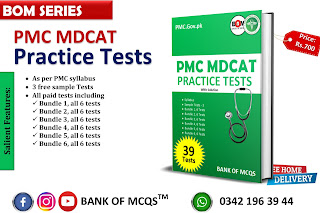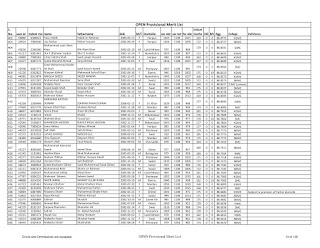Chap.25 Man and his environment
|
1. |
|
|
|
2. |
The
terms Ecology was proposed by: (a)
Linnaeus (b) Haeckel (c)
Morgan (d) All of
these |
A |
|
3. |
Photosynthetic
organism in an ecosystem are (a)
Predators (b) Producers (c)
Parasites (d) All of
these |
B |
|
4. |
The
major regional ecological community is called. (a)
Biosphere (b) Biome (c)
Niche (d) None of
these |
B |
|
5. |
It
is a thin layer around earth where life can exist: (a)
Biosphere (b) Biome (c)
Niche (d) Water |
A |
|
6. |
The
role of an organism in an ecosystem is called: (a)
Niche (b) Habitat (c)
Predator (d) None of
these |
A |
|
7. |
Ecological
study of a species is called: (a)
Autecology (b) Synecology (c)
Succession (d) Ecology |
A |
|
8. |
Study
of a population or community is called: (a)
Synecology (b) Biome (c)
Antecology (d) Ecology |
A |
|
9. |
Which
one is biotic factor? (a)
Air (b) Soil C)
Plant (d) Light |
C |
|
10. |
The
succession initiating on a rock is called: (a)
Lithosere (b) Halosere (c)
Hydrosere (d) Mesosphere |
A |
|
11. |
Succession
starting on sand is called (a
Psammosere (b) Halosere (c)
Xerosere (d) Hydrosere |
A |
|
12. |
An
Association between an algae and a Fungus is called: (a)
Parasitism (b) Lichen (C)
Mycorrhizae (d) All of them |
B |
|
13. |
The
association between fungal hyphae and roots of higher plants is called: (a)
Mycorrhizae (b)
Lichen (c)
Parasite (d) None of
these |
A |
|
14. |
The
careful use of resources is called: (a)
Conservation (b) Recycling (C)
Environment care (d) Both a and |
D |
|
15. |
Oxygen
and Nitrogen form bulk of: (a)
Atmosphere (b)
Biosphere (c)
Aerosphere (d) All of them |
A |
|
16. |
____-%
of all fresh water is found in solid form. (a)
2 % (b) 36% (c)
66% (d)
97% |
A |
|
17. |
About
% of Nitrogen fixation is industrial fixation @
5%-8% (b) 30%-35% (c)
60%-65% (d) None of these |
B |
|
18. |
Industrial
Nitrogen fixation is also called: (a)
Haber's Process (b) Eltonian
Process (c)
Clements Process (d) None of these |
A |
|
19. |
The
reduction of Nitrogen gas to ammonia required: (a)
16 molecules of ATP (b)
Complex Set of Enzyme (c)
Both a and b (d)
It either requires ATP or set of Enzyme. |
C |
|
20. |
Which
of the following is Nitrogen fixing bacteria: (a)
Clostridium (b) Azotobacter (c)
Rhizobium (d) All of these |
D |
|
21. |
Leghaemoglobin
is found in Rhizobium, which has similar function as of: (a)
Immunoglobulin (b) Myoglobin (c)
Hemoglobin (d) Both bandc |
C |
|
22. |
The
specialized Nitrogen fixation structure are found in: (a)
Aenabena (b) Frankia (c)
Both of these (d) None of these |
C |
|
23. |
Which
of the following convert ammonia into Nitrites? (a)
Nitrobacter (b)
Nitrosomonas (c)
Both of These (d) None of these |
B |
|
24. |
Pseudomonas
is an example of: (a)
Denitrifying Bacteria (b)
Nitrifying Bacteria (c)
Ammonofying Bacteria (d)
None of these |
A |
|
25. |
Production
on land ecosystem is maximum at: (a)
30°C (b) 37C (c)
40°C (d) All of
these |
A |
|
26. |
Who
developed the concept of Ecological pyramid? (a)
Eltonian Charles (b) Charles Haber (e)
John Martin (d)
None of these |
A |
|
27. |
Idea
that Succession Ends in development of Climax community' was proposed by (a)
John Martin (b)
Frederic Clement (c)
Eltonian Charles (d) All of them |
B |
|
28. |
Reproduction
is bacteria is the example of (a)
Population Pressure (b)
Exponential Growth (c)
Intrinsic Growth (d) Botha and b |
D |
|
29. |
The
world population will be 12 billion in (a)
2025 (b) 2050 (c)
After 100 Years (d) After 50 Years |
D |
|
30. |
Out
of total fresh water % is consumed by agriculture. (a)
87% (b)
10% (c)
2% (d) 66% |
C |
|
31. |
6
million people die each year from disease which are caused by (a)
Water (b) Virus (c)
Bacteria (d) All of
these |
A |
|
32. |
Estimated
population of Pakistan in 1971 was (a)
100 Million (b) 65 Million (c)
200 Million (d) 50 Million |
B |
|
33. |
The
average death rate in Pakistan in 1950. was: (a)
2.7% (b) 2.0% (c)
1.5% (d) 2.5% |
A |
|
34. |
In
Pakistan ministry of planning and development was established: (a)
1980 (b) 1970 (C)
1985 (d) 2003 |
A |
|
35. |
Which
of the following is the largest source of CO2: (a)
Electricity Generator (b) Transports
(Vehicles) (c)
Deforestation (d) Combustion |
A |
|
36. |
The
Ozone layer is present at height of: (a)
10-20km (b) 20-30km (c)
30-50km (d) 50-80km |
C |
|
37. |
The
measurement unit of Ozone layer is: (a)
Dobson (b) Pascal (c)
Ohm (d) None of
these |
A |
|
38. |
One
Dobson unit is equal to: (a)
0.01mm (b) 0.001m (c)
Imm (d)
10mm |
C |
|
39. |
_____%
of cataract of Eye is due to UV rays. (a)
20% (b)
30% (c)
40% (d)
90% |
A |
|
40. |
The
Chernobyl accident the only accident in history of commercial nuclear, which
happen in: (a)
Japan (b) Ukraine (c)
France (d) USA |
B |
|
41. |
Total
number of tidal cycles in one year: (a)
700 (b) 800 (c)
900 (d) 365 |
D |
|
42. |
At
the depth of 15km, the temperature is: (a)
1100°C (b) 500°C (b)
200°C (d) 2000% |
A |
|
43. |
Typical
range of efficiency of thermal plant is: (a)
20% (b)
40% (c)
60% (d)
80%. |
B |








Comments
Post a Comment